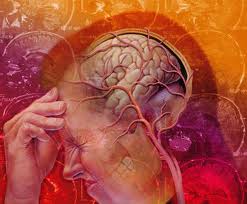Migraine is one of the most common problems that people face all over the world. Although there is no definite cure for the problem, headaches can be controlled by exercise since exercise improves blood and oxygen supply to the brain. Although this has been accepted as an effective treatment, there are no scientific facts and research correlating to this practice. Now however, latest research from Sweden’s Sahlgrenska Academy, University of Gotheberg, has proved that migraine headaches can as effectively be controlled with exercise as with use of medicines.There is no cure, as such, for migraine headaches, although there are a number of temporary remedies and preventive measures. In medicines, a chemical known as topiramate is used with profound effect. Treatments that do not use drugs and are very effective are exercises that cause relaxation of the mind. These are called relaxation exercises.

Scientific proof was very conspicuous by its absence in proving the effectiveness of exercise in solving migraine headaches. The researchers conducted a randomized controlled research in order to analyze the effectiveness of exercise in solving migraine problems. The results were compared against the effects and relief provided by topiramate and relaxation exercises. The study is significant because it is one of a kind and the first research that aims to prove the effect of exercise on migraine.
According to the research, forty minutes of exercise is necessary to gain positive effects. Research was carried out on 91 people who suffered with migraine. 30 people among these were put on the forty minute exercise regime. A physiotherapist was appointed to guide them in their workout. The other 30 were put on relaxation exercise regime. The remaining patients were administered topiramante. The research was carried out for duration of three months. A number of factors such as variation in the quality of life, frequency and intensity of migraine headaches, the amount of physical activity and other improvements in life. The patients were once again evaluated after six months.
The results obtained were surprisingly positive. All the three treatments showed equal improvements in all aspects that were considered for the study. The preventive effects of all the three treatments were found to be equal. The study concluded that exercise for forty minutes a day can help improve the condition of migraine headaches in people. The regime is no less and no more effective than other typical kinds adopted for migraine headaches. People who cannot use drugs can effectively use exercises as a remedy for migraines.